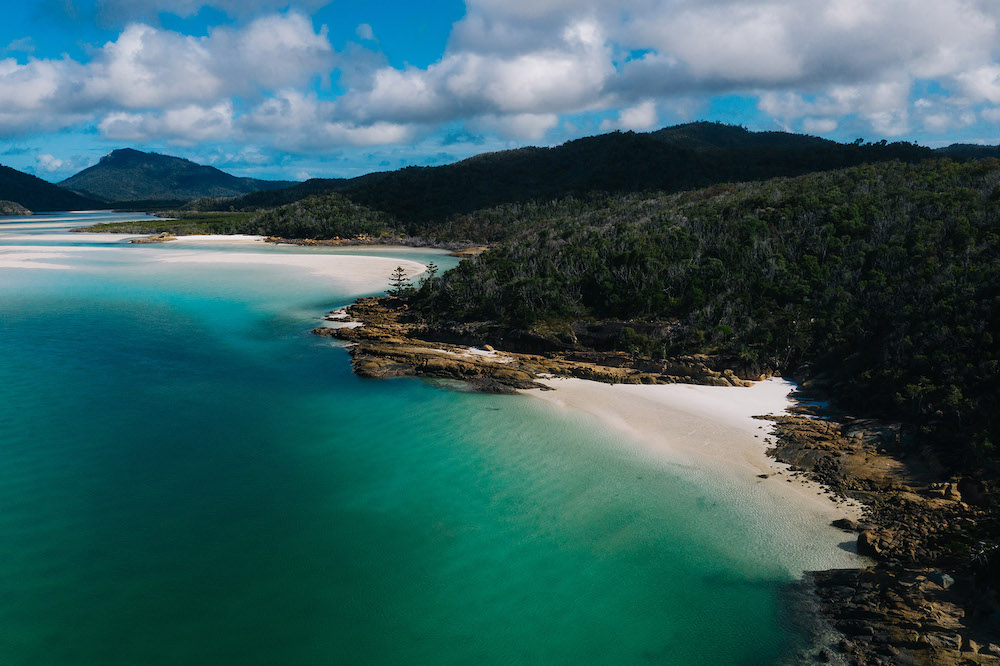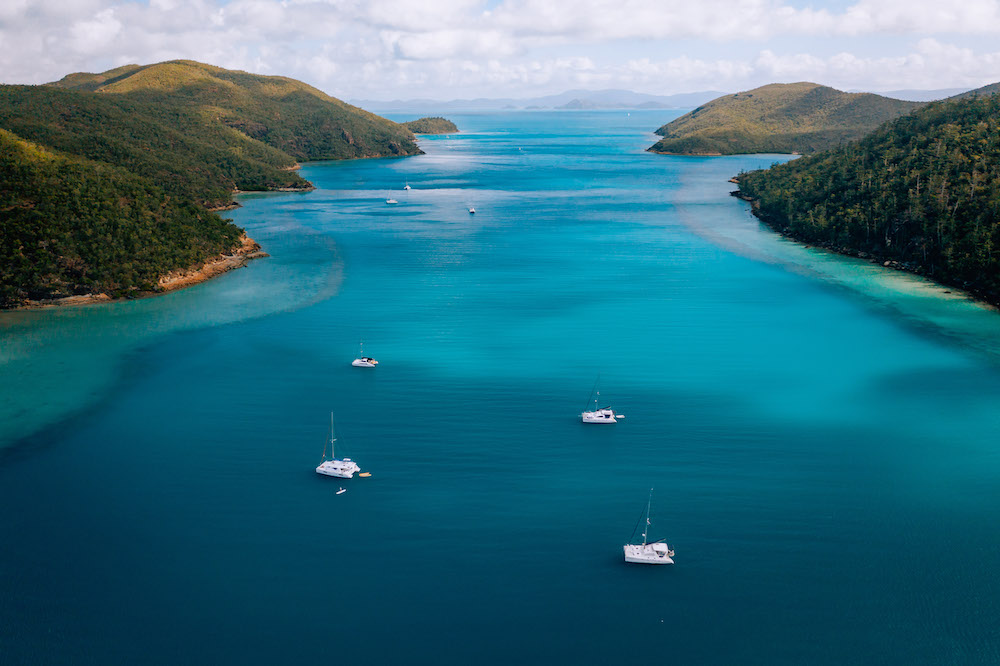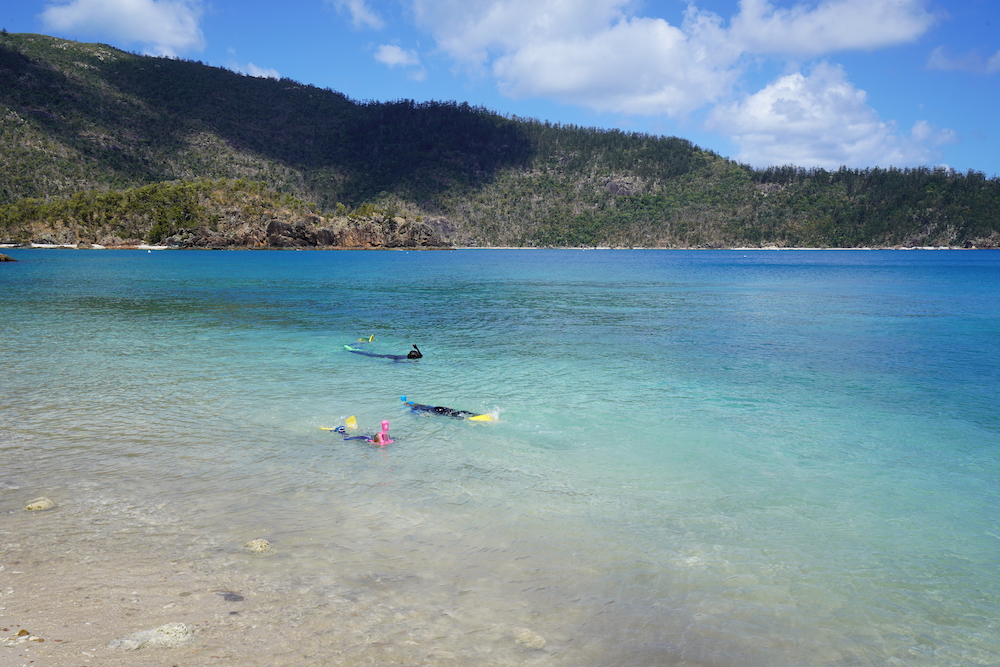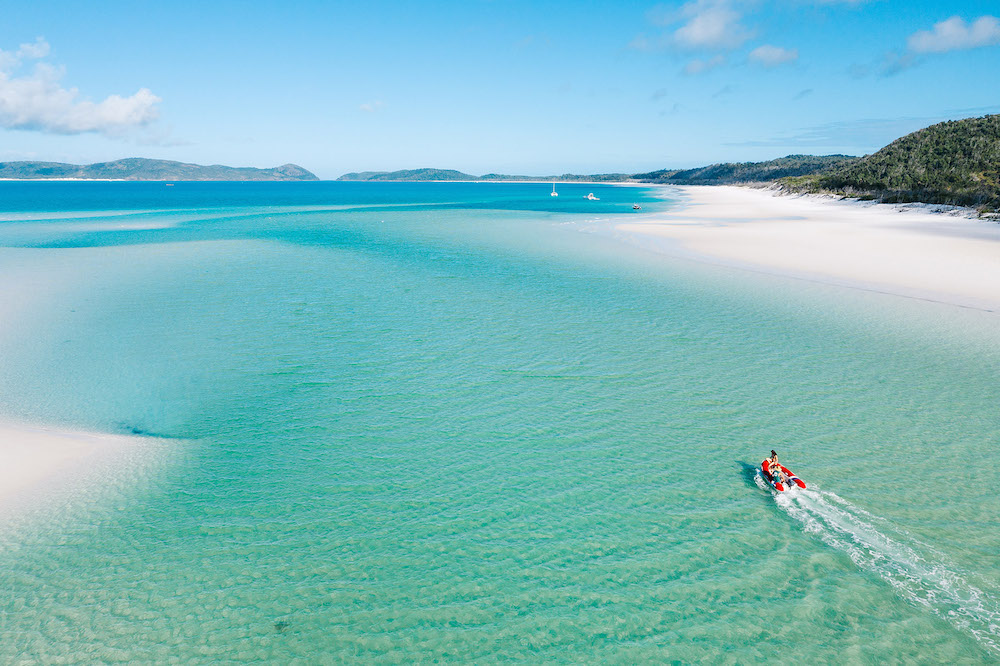Is there a best time to visit the Whitsundays? Generally, the tourism industry up here says it’s September and October, however, there are advantages to visiting the Whitsundays at any time throughout the year.
Deciding when you want to explore the Whitsunday Islands will depend on many factors. Every season has something different to offer, so if you aren’t locked into visiting the Whitsundays within a specific time frame, we suggest looking at the pros and cons of the seasons while also taking public and school holidays into account.
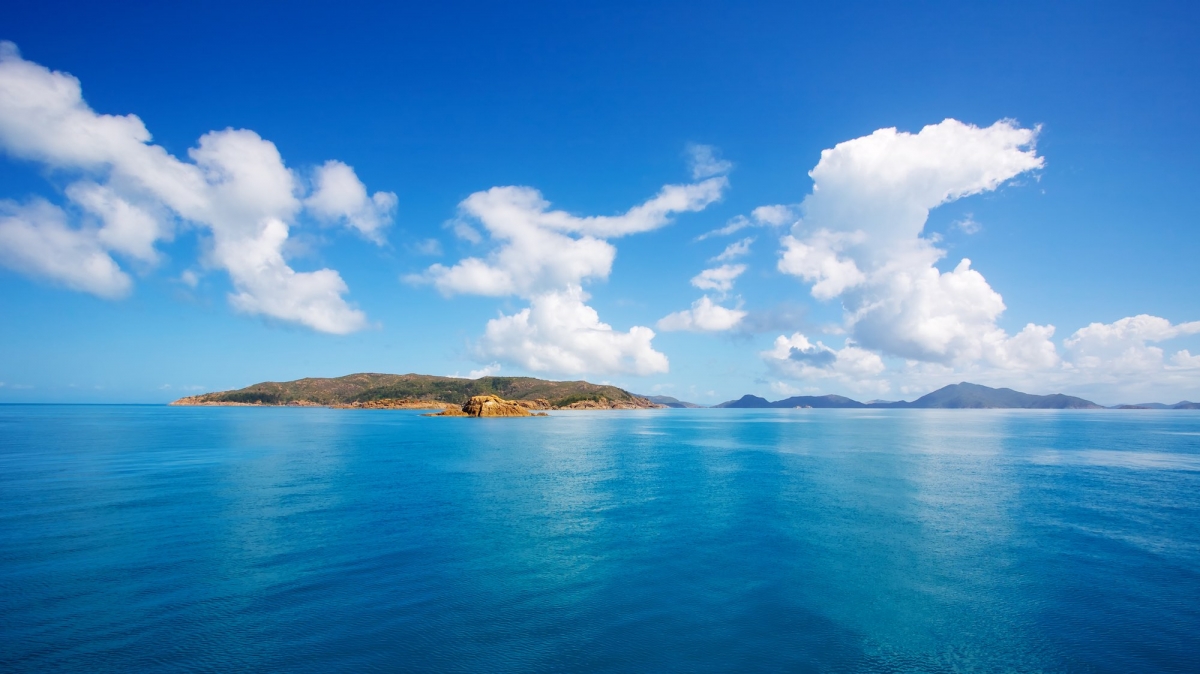
The sub-tropical temperature of the Whitsundays
Located about halfway up the coast of Queensland, you will find the Whitsunday Islands. This part of Queensland is considered sub-tropical, which means a climate of humid summers and warm winters. It also means stunning lush tropical beauty.
The temperature in the Whitsundays is pleasant almost any time of the year. During the peak of winter, average daily temperatures range from around 22 to 23 degrees Celsius (73.4 degrees Fahrenheit). In the height of summer, temperatures reach 29 to 33 degrees Celsius (86 degrees Fahrenheit).
Waters around the Whitsundays Islands are sheltered staying around 25 degrees Celsius (77 degrees Fahrenheit) most of the year round; a perfect temperature for taking a dip. When experiencing the islands, many people enjoy swimming, snorkelling, kayaking and scuba diving no matter what the season.
The Whitsunday Seasons – Wet, Windy & Dry
The Whitsunday Seasons are defined as wet, windy and dry. The ‘wet’ season is from January-March, the most blustery months are March-May, and the driest months are August-October.
The Whitsunday wet season runs over the hottest part of summer. While showers can be frequent, they rarely last all day. The dry season runs over winter, so it can be more relaxed, but the weather conditions are generally consistently perfect. It doesn’t feel like winter at all!
For those interested in sailing, the trade winds begin after the wet season around April, creating brisk sailing throughout the winter. After June, the winds start to settle, becoming lighter after mid-September.
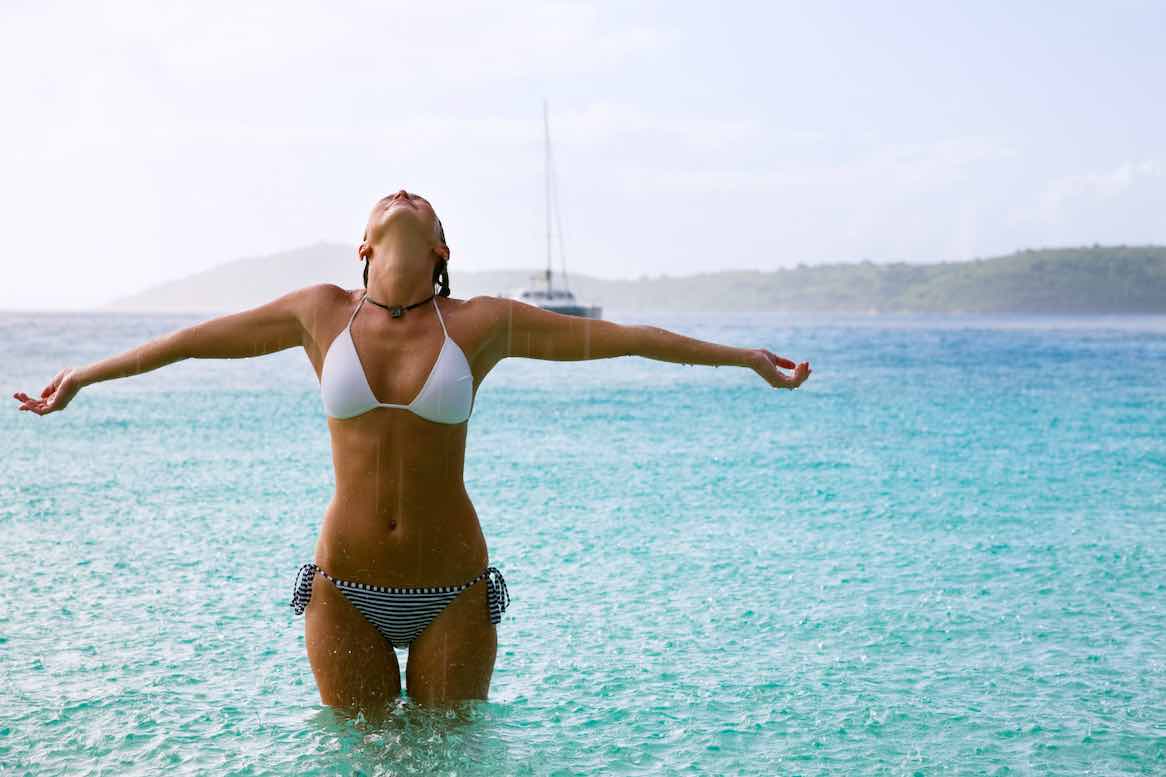
The Pros and Cons of each season in the Whitsundays
Summer (December-March)
Average temp 25 – 33 degrees with a high chance of passing showers
- Summer is the low season – you can get a good deal on hiring a yacht.
- It’s the Whitsundays wet season, but there are only a few days of completely wet weather. Showers pass quickly
- Enjoy the rainforests, hikes, waterfalls and rainbows in all their glory.
- The water and winds are generally calm.
Autumn (April–May)
Average temp 24 – 27 degrees with some humidity but less rain
- Weather can be hard to predict with brisk sailing conditions.
- It’s warm coming off summer, but not too hot.
- Great temperatures for hiking and taking on some of the more significant hiking trails around the islands
- Mid to low-season rates
Winter (June – August)
Average temp 22 – 25 degrees, with warm days and cooler nights with no humidity.
- It can get colder at night so pack warmer clothing options.
- It’s whales watching season in the Whitsundays.
- Trade winds becoming progressively lighter heading into September.
- August hosts race week. The town of Airlie Beach is like a festival, and there is a real buzz.
- August conditions are great for sailing. The conditions are dry with steady southerly winds.
Learn more about winter in the Whitsundays – festivals, whales and race week.
Spring (Sept – Nov)
Average Temp 26 – 30 degrees, beautiful weather with no humidity
- Spring is the most popular time to charter.
- The weather is comfortably warm and always sunny with the lowest rainfall.
- The water is excellent for swimming, with good visibility for snorkelling and scuba diving
- Winds are light, and the ocean is calm.
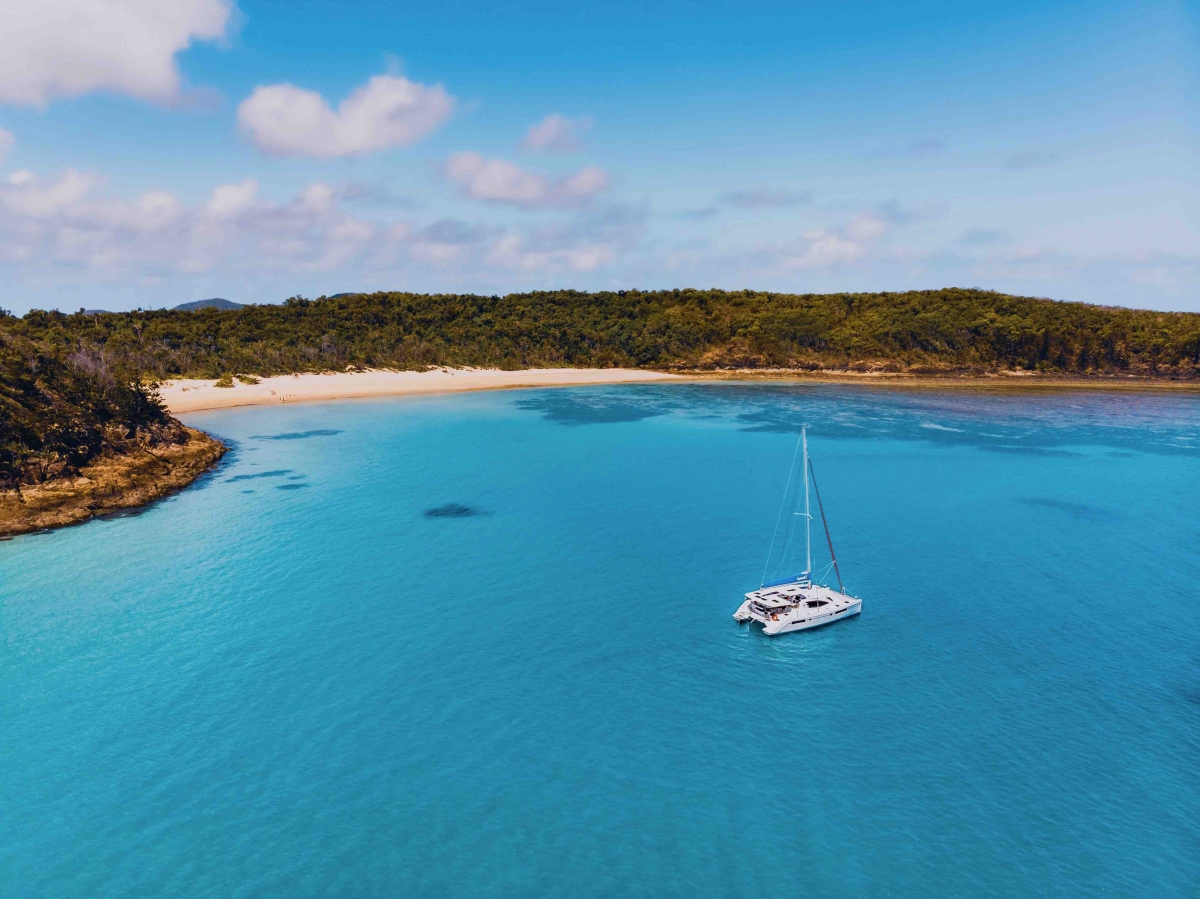
Decide on the best time to visit the Whitsundays based on high & low season
Many people use money and rates as the main deciding factor for when they want to visit the Whitsundays for a bareboating holiday.
If you’re deciding when to visit the Whitsundays around budget, consider when you can get a deal based on the high, mid and low seasons.
Check out our online booking system for more details on rates and availabilities based on the seasons. It’s straightforward to use!
The best time to visit the Whitsundays
Early spring, specifically September, is the best time to visit the Whitsundays. Everything aligns in September thanks to the consistently sunny weather, low humidity, light trade winds and perfect swimming, snorkelling and diving conditions.
September is outside of the stinger season and catches the end of the whale watching season. Rates are primarily outside of the peak, and school holidays only fall on a week during the month.
Three underrated times of year to visit the Whitsundays
If you’re able to travel outside of holiday periods and you’re looking for a time of year to sail the Whitsundays outside of peak rates we suggest considering these three underrated times of year to sail.
- November: Great rates and sailing conditions with slight rainfall
- Early December: Warmer weather and slight rainfall
- May / June: Mostly sunny with low humidity

Monthly temperatures and rainfall in the Whitsundays
We have taken this chart from Cruise Whitsundays, who offer day trips and taxi services around the Islands.
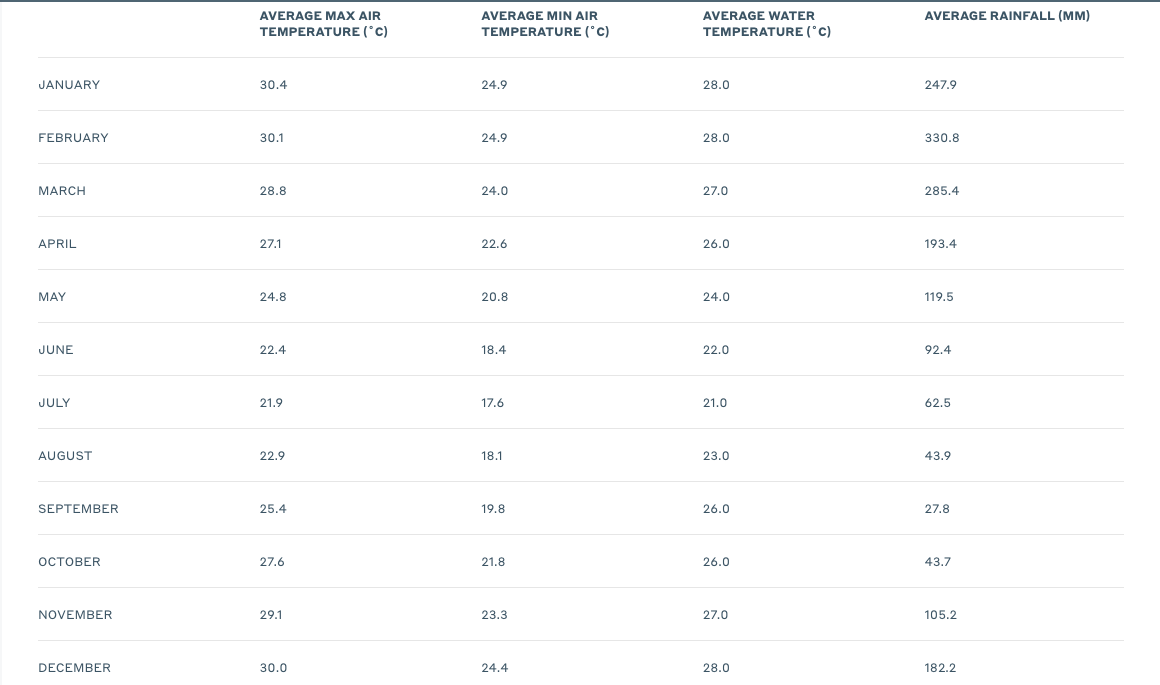
Stinger season in the Whitsundays
From October through to May, mid-spring until late autumn, the warm waters of Queensland attract Irukandji and box jellyfish. This time of year is known as stinger season, and everyone who wishes to enjoy swimming, diving or snorkelling is asked to take safety precautions when entering the water.
During the stinger season, swimmers and snorkelers should always wear protective stinger suits, which prevent jellyfish tentacles from accessing the covered skin. Charterers with Whitsunday Rent a Yacht are fitted with stinger suits during their briefing.Jellyfish fatalities are highly uncommon in the Whitsunday Islands, and stinger season doesn’t mean you don’t get to enjoy the ocean. However , you need to wear safety gear and minimalize risks.
We recommend that guests use a stinger suit all year round for sun protection.
Cyclone Season in the Whitsundays
Cyclones occur off the Queensland coast between December and April. The likelihood of a cyclone directly impacting the mainland is low – and one affecting the Whitsunday region is even smaller.
Fortunately, Queensland has an excellent cyclone warning system using state-of-the-art forecasting technology. We always hear about a potential cyclone weeks before it poses any threat, and we have several days’ warning if it’s looking like the Whitsundays will be directly affected. Once formed, cyclones tend to move slowly at about 8 to 12 knots, giving us plenty of notice if one is developing.
If you’re travelling in the cyclone season, make sure your insurance covers cancellations in case of a cyclone.
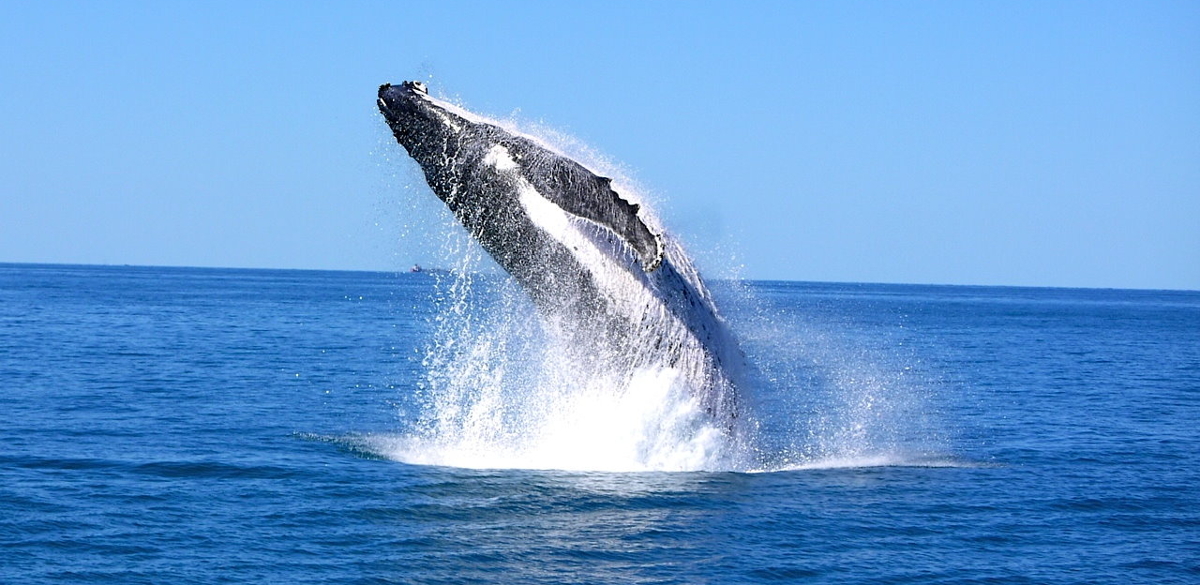
Whale season in the Whitsundays
Whale season in the Whitsundays is one of the best times of the year. There is nowhere else in Australia where you can hire a private yacht and cruise around tropical islands living amongst Humpback whales!
The whale watching season is from June until September. Understandably it’s a popular time to charter, so book ahead to secure a boat at your desired rates.
When is the best sailing conditions in the Whitsundays?
Many yachties say that late September into early November is the best cruising weather in the Whitsundays, thanks to the trade winds. However, you can almost always be assured of having enough wind for a pleasant sail at any time of year.
From 100 Magic Miles – The Whitsundays boating bible
“The arch weather systems over Australia result in periodic bursts of trade wind activity throughout the season, which lasts from March to April through to September. Winds can suddenly spring up from a southerly direction, even in the middle of the night. For this reason, local skippers strongly advise against the overnight use of south –exposed anchorages from March – Sept. Exceptions are Nara and Macona Inlets”
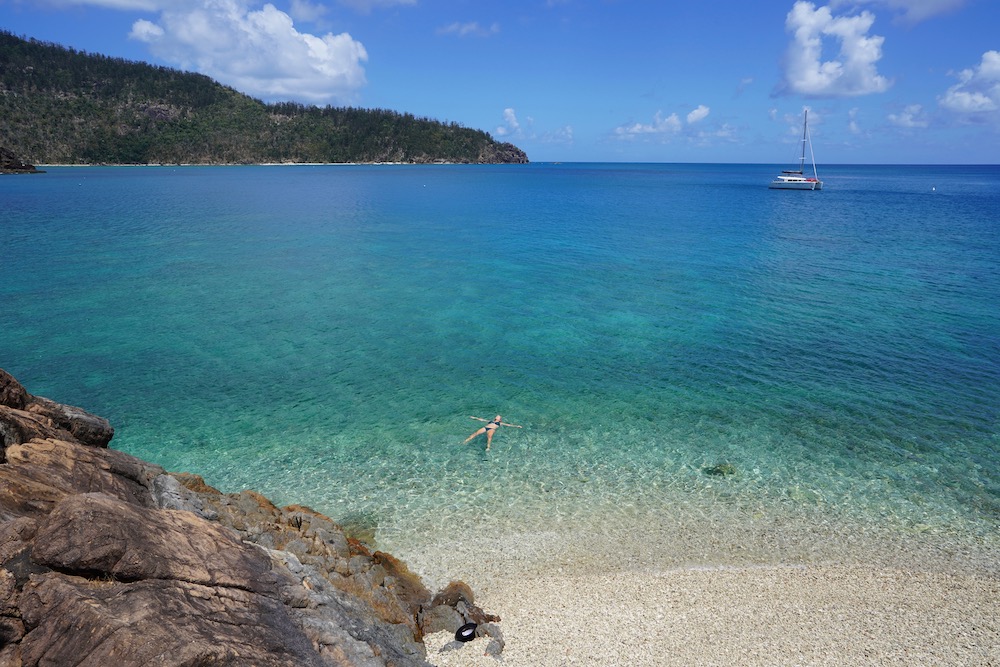
Ultimately the Whitsundays Region is lucky enough to have decent weather throughout the year, with each season offering its unique attractions.
Before deciding when you want to visit the Whitsundays, we suggest exploring our online booking system, where you can play around with dates and rates.

